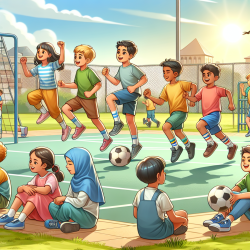As speech-language pathologists, our goal is to leverage evidence-based practices to foster the best outcomes for children. A recent study titled The Contribution of Visual and Auditory Working Memory and Non-Verbal IQ to Motor Multisensory Processing in Elementary School Children provides crucial insights into how cognitive abilities such as working memory (WM) and non-verbal IQ contribute to multisensory processing in children.
This blog post aims to distill key findings from the study and offer practical applications for enhancing multisensory processing in children through targeted interventions.
Key Findings
The study involved 75 elementary school children aged 5-10 years and used a variety of tasks to measure visual and auditory WM, non-verbal IQ, and multisensory motor reaction times (MRTs). Here are the key takeaways:
- Visual WM, rather than auditory WM, is a stronger predictor of multisensory MRTs.
- Non-verbal IQ, assessed using Raven’s Coloured Progressive Matrices (RCPM), also significantly predicts multisensory MRTs.
- Grade differences were more pronounced in visually-based tasks, indicating that visual WM and non-verbal IQ develop significantly during early childhood.
Practical Applications
Based on these findings, practitioners can implement several strategies to enhance multisensory processing in children:
- Focus on Visual WM Tasks: Given the strong correlation between visual WM and multisensory MRTs, incorporating activities that enhance visual memory can be beneficial. Examples include visual sequencing games, memory matching games, and visual pattern recognition tasks.
- Enhance Non-Verbal IQ: Activities that improve non-verbal reasoning and problem-solving skills, such as puzzles and spatial reasoning games, can contribute to better multisensory processing.
- Multisensory Integration Exercises: Engage children in tasks that require the integration of visual and auditory stimuli, such as following multi-step instructions that involve both seeing and hearing.
Encouraging Further Research
While this study provides valuable insights, further research is needed to explore the long-term effects of targeted interventions on multisensory processing. Practitioners are encouraged to contribute to this growing field by conducting their own research and sharing their findings.
To read the original research paper, please follow this link: The Contribution of Visual and Auditory Working Memory and Non-Verbal IQ to Motor Multisensory Processing in Elementary School Children.










